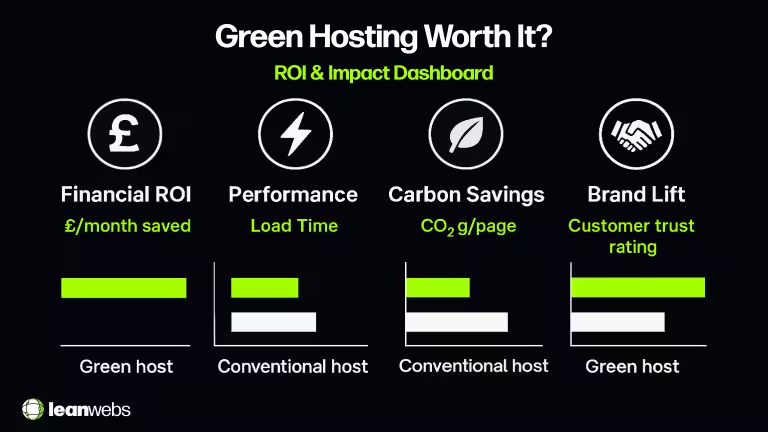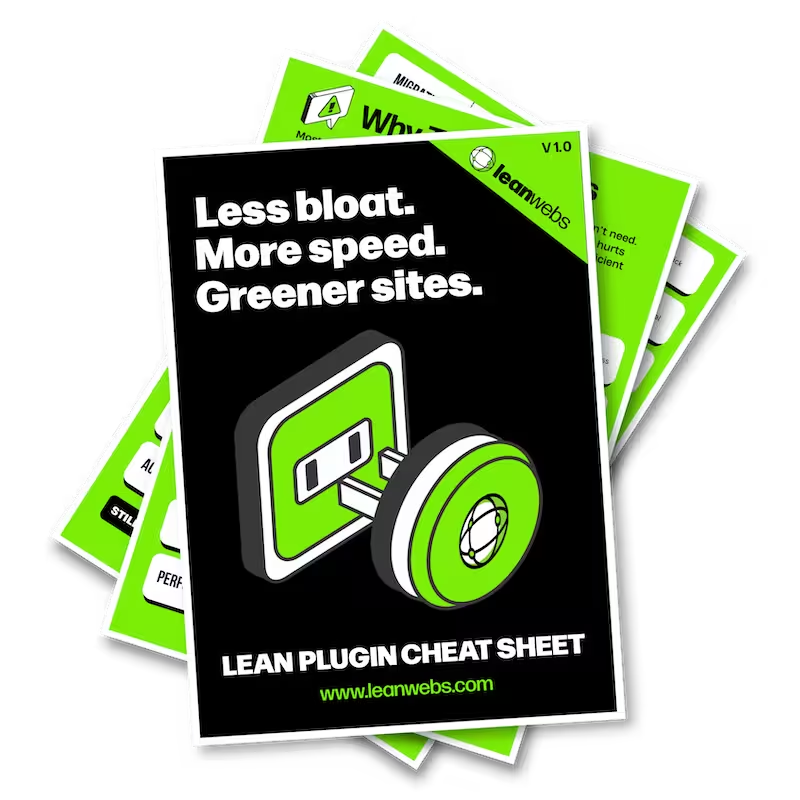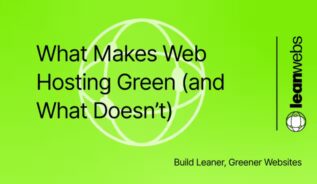Faster load times, lower carbon emissions, and a boost to your brand reputation – the right green hosting can deliver all three. But is it worth the investment for your site?
This guide breaks down the numbers, the environmental impact, and the practical steps so you can decide with confidence, armed with facts rather than marketing claims.
Table of Contents
What “worth it” means for green hosting

Before you can decide if green hosting is worth it, you need to know exactly what you’re measuring. For most site owners, “worth it” comes down to four key pillars:
- Financial ROI – Will this switch save you money or help you make more?
- Performance – Will your site load faster, run smoother, and stay online more reliably?
- Carbon savings – How much will you reduce your website’s emissions?
- Brand lift – Will customers, partners, and your audience see and value your commitment to sustainability?
Think of these like the legs of a table, strong ROI comes when all four legs are solid. Ignore one, and the stability of your decision wobbles.
Why these four pillars matter
- Financial ROI isn’t just about hosting cost. It includes savings from fewer outages, less need for performance plugins, and potential SEO gains from faster speeds.
- Performance affects everything from conversion rates to search rankings. A faster site creates happier visitors and higher retention.
- Carbon savings matter not only for the planet but for compliance and future-proofing, as regulations and corporate sustainability demands grow.
- Brand lift can be subtle but powerful. In competitive markets, a visible sustainability stance can tip the balance for eco-conscious buyers.
The metrics you’ll need
- HTTP Archive Sustainability Data – Gives you the industry baseline for page weight and emissions.
- PUE (Power Usage Effectiveness) – A measure of data centre efficiency; 1.0 is perfect. Learn more about the real factors that make hosting eco-friendly.
- SWDM v4 (Sustainable Web Design Model) – Updated in 2025, it calculates emissions more accurately, factoring in uncertainty ranges.
- CO2.js + Ember grid data – Converts your site’s traffic and hosting location into real-world carbon output using the local electricity grid’s carbon intensity.
These aren’t just technical terms, they’re the tools that let you measure whether your hosting is pulling its weight in each pillar. By tracking them, you can quantify gains and present a clear case for the switch to stakeholders or clients.
Counting the carbon – and the water
Carbon emissions get the most attention, but water use is a hidden environmental cost many hosting buyers overlook. Cooling servers in data centres consumes huge amounts of water, and in water-stressed areas, that impact can rival or even outweigh the carbon footprint.
Step-by-step to measure your site’s impact:
- Estimate emissions with SWDM v4 – Input your average page size, monthly traffic, and data transfer.
- Run a quick check with Website Carbon Calculator – This gives you an easy benchmark, though it’s less location-specific.
- Refine using CO2.js + Ember grid data – Adjusts results based on your host’s exact server location and its grid carbon intensity.
- Ask for your host’s WUE (Water Usage Effectiveness) – This metric tells you how many litres of water are used per kWh of IT load.
Why WUE matters:
- A low WUE means efficient cooling systems that conserve water.
- High WUE in drought-prone areas adds environmental strain and potential reputational risk.
Example in action: A WordPress portfolio site serving 50,000 monthly visits with a 2 MB homepage:
- On a conventional host: ~4–5 kg CO₂/month and high cooling water demand.
- On a verified green host with efficient cooling: ~2–3 kg CO₂/month and up to 30% less water use.
By including both carbon and water in your evaluation, you avoid the pitfall of “carbon tunnel vision” and make a decision that’s truly sustainable in every sense.
For broader context, the IEA and LBNL have both reported that data centre cooling water demand is a rising global concern (IEA report, LBNL report). To learn more about calculating your site’s footprint, see our guide to calculating your website’s carbon impact.
Do sustainable hosts deliver on performance and cost?
One of the most common concerns about green hosting is the belief that it will cost more or run slower. In reality, many sustainable hosting providers now match or beat mainstream hosts on both speed and price (myths about green hosting performance and cost).
Performance signals to look for:
- PUE scores of 1.1–1.2, on par with hyperscale data centres.
- CUE (Carbon Usage Effectiveness) under 0.1, showing low carbon per energy unit.
- ERE (Energy Reuse Effectiveness) indicating waste heat is repurposed rather than vented.
- Integrated CDN and caching for better global load times.
Leading cloud providers such as AWS, Microsoft Azure, and Google Cloud publish performance and sustainability benchmarks, reviewing these can help you understand what’s achievable (AWS Sustainability, Microsoft Sustainability, Google Data Centre Efficiency).
Real-world ROI example: A small e-commerce business switched to a verified green host and saw load times drop by 0.3 seconds. This small improvement increased conversion rates by 5%, worth roughly £500 per month in added revenue. The new hosting plan costs £5 more per month – a net gain of £495.
Why this matters beyond money:
- Faster load times improve SEO rankings.
- Improved uptime reduces the risk of losing sales or leads.
- Hosting on efficient infrastructure reduces strain on your development team by cutting the need for extra optimisation plugins.
For practical setup guidance, see our Web hosting performance guide for a deep dive into speed and sustainability.
Green claims decoded – RECs, PPAs, and 24/7 matching
Hosting companies often promote their eco-credentials, but the terminology can be confusing, and sometimes misleading. Understanding the difference between RECs, PPAs, and 24/7 matching helps you separate genuine impact from clever marketing.
- RECs (Renewable Energy Certificates) – These offset your energy use by funding renewable generation elsewhere. They’re common and affordable, but research suggests their real-world impact can be limited if they don’t contribute to new renewable capacity (NewClimate Institute report).
- PPAs (Power Purchase Agreements) – Long-term contracts that directly fund new renewable energy projects. More impactful than RECs because they help build actual capacity.
- 24/7 hourly matching – The gold standard. Ensures that every hour of your site’s operation is matched with clean energy production, reducing reliance on offsets.
- Green Web Foundation verification – Independent confirmation that a host’s green claims hold up under scrutiny.
Good-better-best ladder:
- Good – Uses RECs to match annual energy consumption.
- Better – Has PPAs covering a significant share of supply.
- Best – Achieves 24/7 clean energy matching, verified by an independent body.
Next steps
If you’ve read this far, you already know that green hosting can deliver more than just an environmental benefit, it can drive tangible business results. The next move is to put this knowledge into action.
- Measure your current impact using SWDM v4 or the Website Carbon Calculator to establish a baseline.
- Clarify your priorities – is your main goal reducing carbon, improving speed, boosting brand image, or all three?
- Shortlist providers that meet your criteria using.
- Verify their claims through the Green Web Foundation Directory and ask for performance and sustainability reports.
- Trial your top choice – most hosts offer money-back guarantees, so you can test performance and support without long-term risk. For a smooth move, follow our step-by-step guide to switching to a green host without downtime.
Your website will continue to use resources whether you optimise or not. By making a proactive switch to a verified green host, you’re not only reducing your footprint but also investing in a faster, more resilient, and more marketable online presence. The sooner you start, the sooner you can measure, and celebrate the results.



